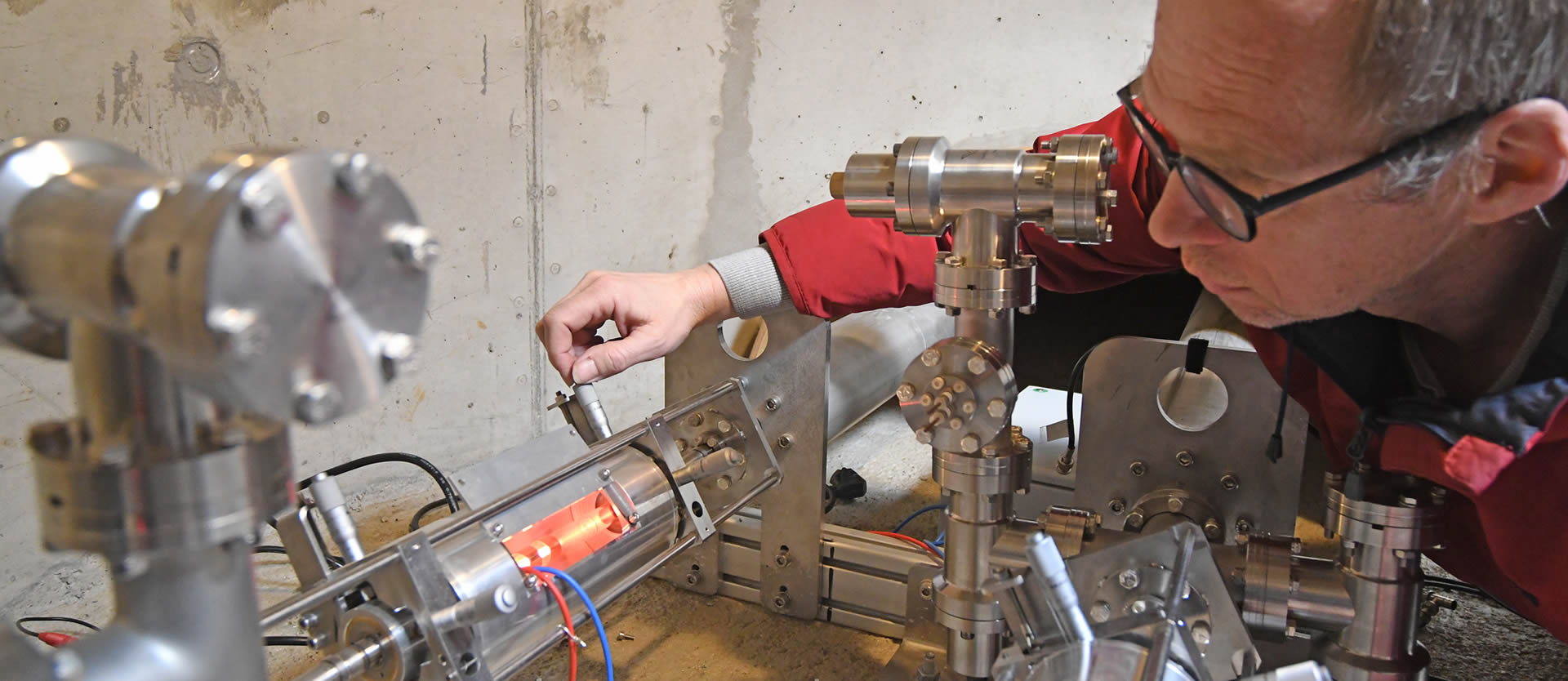A Light-Based Sensor of Seismic Activity

Heiner Igel hasn’t a care in the world, as he strolls from the wooded copse that is home to the Geophysical Observatory at Munich’s Ludwig-Maximilian University (LMU) into the open countryside beyond Fürstenfeldbruck. In the spring sunshine, the fields roundabout are at their glowing best. Igel, Professor of Geophysics, is on his way to the site of a pioneering advance in instrumental seismology. His goal turns out to be what look like silvery portholes set in the ground at his feet.
“Just below us lies the laser system that we are now using to measure minimal shifts in the Earth’s motion,” he says, and opens one of the hatches. This gives access to a concrete duct that leads into an underground chamber about 2 m below the surface.
Igel climbs down a ladder set in the wall of the shaft and in the room below is a laser, which one can see through a port in a tube. The laser emits red light, which is used to generate oppositely propagating beams that disappear into the walls of the bunker. Each beam travels 6 meters horizontally, and is then deflected downwards by a mirror for a distance of about 12 meters before being reflected obliquely upwards. The net result is that both beams trace out the same triangular path.
“What we have here may well be the future of seismology, for this is the first instrument that uses laser light to measure rotational movements of the Earth’s surface,” Igel says. “The ground beneath our feet is never at rest,” he explains. “It is constantly in motion. It breathes, so to speak, and it rotates. Because these motions have minuscule amplitudes – in the region of a few nanometers – we don’t notice them. Fortunately, the likelihood of a severe earthquake in Bavaria is vanishingly small.” Such events are restricted to the edges of the Earth’s continental plates and regions with volcanic activity. The energy released by these earthquakes is transmitted as wave-like, ‘ringing’ ground motions around the globe. And if the source earthquake is sufficiently intense, these waves can be detected and quantified at any point on Earth, including Fürstenfeldbruck. These waves not only excite planar motions, back-and-forth and side-to-side, they also result in minimal rotational displacements. But although, geophysicists have long known that such rotational movements occur in the aftermath of an earthquake, they have not been able to measure them – “until now” adds Heiner Igel. For the new ring laser, familiarly dubbed ROMY (which deliberately evokes memories of the well-known Austrian actress Romy Schneider, but stands for ‘Rotational Motions in Seismology’), is in fact capable of detecting and quantifying tilting ground motions.













